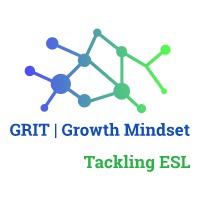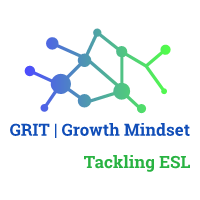GRIT - 2018-2020


- Scope
- Objectives
- Results
- Experimentation
- European networks
- French networks
- Publications & Presentations
Introduction
Students in urban areas have many different backgrounds. This poses a tremendous challenge to education. It is important for teachers and students to be aware of this background in order to be able to supply high quality education. In order to tackle Early School Leaving (ESL) and in order to increase these students’ success at school we aim at developing students’ growth mindsets. In addition to this we aim at fostering educators to work with youngsters in urban areas by tackling youngsters’ self-efficacy through developing their growth mindset. This Erasmus+ project sees diversity among students not as a problem, it addresses the challenge to provide high quality education through helping students to better understand their capacities, and to help students and educators to develop the beliefs that are needed to be successful at school.


I. Scope
Diversity has become a main issue in the European Union especially since the enlargement of 2004 where ten countries, mainly from the Eastern part of Europe entered the EU. It is also a main reference in the motto of the EU- ‘united in diversity’. ‘Unity’ is not an end in itself but has a specific goal: forging a ‘common destiny’ (Gialdino, 2017). The notion of ‘diversity’ lies in the strong call for peoples to be proud of their national identities and history and for the respect of everyone’s rights.
Striking a balance between unity and diversity is crucial. Too much unity would run the risk of standardisation and therefore the destruction of national identities. Too much diversity could easily prevent intentions from converging and, in the long term, undermine the construction of a re-united Europe. Diversity is a genetic heritage of our continent in which unifying factors such as a single language, a common religion or a central power able to impose a uniform European model are lacking (Giscard d’Estaing, 2005). A reasonable balance therefore has to be struck between the needs of diversity and the need to form a coherent whole.
Urban education is a recently developing field of education which builds on the diversity approach in education. A central question in this field is how can educators working in a urban environment cope with diversity- assets and main barriers they are faced to?
Typical students’ self-efficacy or the belief of students in their capabilities to achieve a goal or outcome is identified as a key aspect to increase their success at school. Hence, it is vital for teachers to be able to foster all students self-efficacy. The GRIT-project is an acronym that refers to this theme of the role of a growth mindset in diverse urban educational settings. In English the word stands for ‘courage and determination despitedifficulty’ (Cambridge dictionary online).
II. Objectives
III. Results
The GRIT project means to design
1- a toolkit (IO1) to identify and assess the barriers and obstacles students are faced with when born and raised in a diverse environment; and to assess specific skills & competences they have developed within their personal experience in diversity (KC1-2-5-8).
2- a guideline (protocol) to increase students’ resilience based on a testing (IO2) of this toolkit using the ‘growth mindset approach’ (focus KC1-2)
3- a training for educators (IO3) – train the trainers course - teachers & professionals working with youngsters being trained to this pedagogical & innovative approach to enrich their professional practice and being able to use the IO1 in their assessment
4- a guideline (protocol) to train professionals (IO4) at school and educators outside school (KC 5-8) ; learning to learn making the link between formal, non-formal and informal learning
5- an e-book (IO5) for different stakeholders involved in the struggle against ESL– in order for them to be able to explain the GRIT approach to other educators (at school and outside school) faced to any kind of diversity (IO3) making the link with the struggle against Early School Leaving (ESL)
IV. Experimentation
V. European networks
VI. French networks
VII. Publications & Presentations
← Back























